(21) Law of Variation of Atomic Pitch by Temperature
"Atoms in chemical combination oscillate with increasing amplitude directly as the temperature, and simultaneously absorb overtones of higher harmonics, producing expansion of volume and diminution of pitch.
Rule: The gradual approach of the temperature of harmonic combination can be observed by mutually comparing superimposed spectra; chemical combination commences when the fundamental lines of each spectrum bear harmonic ratios by linear measurement."
(22) Law of Pitch of Atomic Oscillation
"Atoms not isolated and in a state of tension between forces that oppose and increase the equilibrium oscillate bodily at a pitch that is a resultant of the atomic weight, atomic volume, and tension."
(23) Law of Variation of Pitch of Atomic Oscillation by Pressure
"The frequency of atomic oscillation increases and diminishes inversely as the square of the pressure."
(24) Law of Variation of Atomic Oscillation by Temperature
"The force of cohesion diminishes inversely as the square of the distance the atoms are apart, and the force of the chemical affinity diminishes in the same ratio. Heat increases the amplitude of the oscillations in a direct ratio to the temperature of the natural scale.
Scholium: New thermometers and accurate thermometric tables, on the natural base, wherein doubling the temperature doubles the pitch of the transmissive energy, are required. Such a table of temperature will bear natural relations to atomic weights, pitches, specific heats, chemical affinities, fusions, solubilities, etc., and will disclose new laws. One table for each must be constructed."
(25) Law of Variation of Atomic Oscillation by Electricity
"The electric current destroys cohesion and chemical tension directly as square of current in amperes, inversely as the resistance in ohms, inversely as the chemical equivalent, and conversely as the coefficient of the difference between the freezing and volatilizing temperature of mass acted upon."
(26) Law of Variation of Atomic Oscillation by Sono-thermism
"Diminishes the tensions directly as the quantity of heat developed, and in antithetical proportion to the harmonics absolved."
(27) Law of Chemical Affinity
"Atoms whose atomic pitches are in either unison, harmonic or concordant ratios, unite to form molecules.
Corollary: When two atoms are indifferent, they may be made to unite by varying the pitch of either, or both.
Scholium: This necessitates the construction of tables, representing variation of atomic pitches by temperature, pressure, etc.
Scholium: Tables of all harmonics and concords, and harmonics founded upon a normal harmonic scale, are equally essential.
Scholium: Optical instruments may be made to measure pitches of energy."
(28) Law of Chemical Dissociation
"If the pitch of either atom, in a molecule, be raised or lowered; or, if they both be unequally raised or lowered in pitch until the mutual ratio be that of a discord; or, if the oscillation amplitude be augmented by heat until the atoms are with the concentric waves of attraction, - the atoms will separate."
(29) Law of Chemical Transposition
"New molecules must be harmonics of the fundamental pitch."
(30) Law of Chemical Substitution
"(too complex for brief statement)"
(31) Law of Catalysis
"The presence of harmonics and discords."
(32) Law of Molecular Synthesis and Combination (Organic)
"The molecular pitch must be a derived harmony of the radicals.
Scholium: Reconstruction of electric units to represent pitches and amplitudes."
(33) Law of Chemical Morphology
"The angle of crystallization is determined by the relation between the molecular pitch of the crystallizing substance to the variation- density of the liquid depositing it."
(34) Law of Atomic Dissociation
"Overtones of high rad-energy pitches produce separation of the atomoles and recombinations among the atomolic molecules of the atoms."
(35) Law of Atomolic Synthesis of Chemical Elements
"Harmonic pitches of atomolity produce association of etheric-atomolic particles to form atoms; the kind of atom is determinable by the pitches employed."
(36) Law of Heat
"Atoms under the tension of chemical combination oscillate with an amplitude directly as the temperature, inversely as the pressure, and as the square of the specific heat. Diminishing the pitch of oscillation inversely as the square of the distance of the atoms apart, and simultaneously increasing the vibrating pitch of the atom by absorption of overtones and higher harmonics."
(37) Law of Electro-Chemical Equivalents
"An atom vibrates sympathetically under the influence of electric energy, such undertones of which are absorbed as are a harmonic or harmony of the electric pitch; the amount of energy absorbed being directly as the arithmetical ratio of the undertone of the fundamental electric pitch.
Scholium: A table of electro-chemical equivalents on the normal basis will indicate the electrical conditions and amount of chemical change."
(38) Law of Cohesion
"The cohesion between atoms diminishes directly as the square root of the pressure and temperature, and as the square of electric intensity."
(39) Law of Refractive Indices
"A table of the refractive indices of substances indicates their molecular pitch; and in connection with crystalline form the phase of molecular oscillation."
(40) Law of Electric Conductivity
"Electric energy is transmitted through homogeneous bodies with a completeness in direct proportion as the atoms are more or less perfect harmonics of the electric pitch, but not at all through substances whose atoms are discordant to the electric pitch; also through molecular substances, when their resultant notes are harmonics of the electric pitch, - the transmissions being inversely as the temperature, directly as the density diminished in proportion to the amount of crystallization, and inversely as the cube of the dyne, also directly as the reciprocal of the local magnetic intensity."
for more info go the link
study them, you'll see that there are many connections to many posts made in our discussion

"Atoms in chemical combination oscillate with increasing amplitude directly as the temperature, and simultaneously absorb overtones of higher harmonics, producing expansion of volume and diminution of pitch.
Rule: The gradual approach of the temperature of harmonic combination can be observed by mutually comparing superimposed spectra; chemical combination commences when the fundamental lines of each spectrum bear harmonic ratios by linear measurement."
(22) Law of Pitch of Atomic Oscillation
"Atoms not isolated and in a state of tension between forces that oppose and increase the equilibrium oscillate bodily at a pitch that is a resultant of the atomic weight, atomic volume, and tension."
(23) Law of Variation of Pitch of Atomic Oscillation by Pressure
"The frequency of atomic oscillation increases and diminishes inversely as the square of the pressure."
(24) Law of Variation of Atomic Oscillation by Temperature
"The force of cohesion diminishes inversely as the square of the distance the atoms are apart, and the force of the chemical affinity diminishes in the same ratio. Heat increases the amplitude of the oscillations in a direct ratio to the temperature of the natural scale.
Scholium: New thermometers and accurate thermometric tables, on the natural base, wherein doubling the temperature doubles the pitch of the transmissive energy, are required. Such a table of temperature will bear natural relations to atomic weights, pitches, specific heats, chemical affinities, fusions, solubilities, etc., and will disclose new laws. One table for each must be constructed."
(25) Law of Variation of Atomic Oscillation by Electricity
"The electric current destroys cohesion and chemical tension directly as square of current in amperes, inversely as the resistance in ohms, inversely as the chemical equivalent, and conversely as the coefficient of the difference between the freezing and volatilizing temperature of mass acted upon."
(26) Law of Variation of Atomic Oscillation by Sono-thermism
"Diminishes the tensions directly as the quantity of heat developed, and in antithetical proportion to the harmonics absolved."
(27) Law of Chemical Affinity
"Atoms whose atomic pitches are in either unison, harmonic or concordant ratios, unite to form molecules.
Corollary: When two atoms are indifferent, they may be made to unite by varying the pitch of either, or both.
Scholium: This necessitates the construction of tables, representing variation of atomic pitches by temperature, pressure, etc.
Scholium: Tables of all harmonics and concords, and harmonics founded upon a normal harmonic scale, are equally essential.
Scholium: Optical instruments may be made to measure pitches of energy."
(28) Law of Chemical Dissociation
"If the pitch of either atom, in a molecule, be raised or lowered; or, if they both be unequally raised or lowered in pitch until the mutual ratio be that of a discord; or, if the oscillation amplitude be augmented by heat until the atoms are with the concentric waves of attraction, - the atoms will separate."
(29) Law of Chemical Transposition
"New molecules must be harmonics of the fundamental pitch."
(30) Law of Chemical Substitution
"(too complex for brief statement)"
(31) Law of Catalysis
"The presence of harmonics and discords."
(32) Law of Molecular Synthesis and Combination (Organic)
"The molecular pitch must be a derived harmony of the radicals.
Scholium: Reconstruction of electric units to represent pitches and amplitudes."
(33) Law of Chemical Morphology
"The angle of crystallization is determined by the relation between the molecular pitch of the crystallizing substance to the variation- density of the liquid depositing it."
(34) Law of Atomic Dissociation
"Overtones of high rad-energy pitches produce separation of the atomoles and recombinations among the atomolic molecules of the atoms."
(35) Law of Atomolic Synthesis of Chemical Elements
"Harmonic pitches of atomolity produce association of etheric-atomolic particles to form atoms; the kind of atom is determinable by the pitches employed."
(36) Law of Heat
"Atoms under the tension of chemical combination oscillate with an amplitude directly as the temperature, inversely as the pressure, and as the square of the specific heat. Diminishing the pitch of oscillation inversely as the square of the distance of the atoms apart, and simultaneously increasing the vibrating pitch of the atom by absorption of overtones and higher harmonics."
(37) Law of Electro-Chemical Equivalents
"An atom vibrates sympathetically under the influence of electric energy, such undertones of which are absorbed as are a harmonic or harmony of the electric pitch; the amount of energy absorbed being directly as the arithmetical ratio of the undertone of the fundamental electric pitch.
Scholium: A table of electro-chemical equivalents on the normal basis will indicate the electrical conditions and amount of chemical change."
(38) Law of Cohesion
"The cohesion between atoms diminishes directly as the square root of the pressure and temperature, and as the square of electric intensity."
(39) Law of Refractive Indices
"A table of the refractive indices of substances indicates their molecular pitch; and in connection with crystalline form the phase of molecular oscillation."
(40) Law of Electric Conductivity
"Electric energy is transmitted through homogeneous bodies with a completeness in direct proportion as the atoms are more or less perfect harmonics of the electric pitch, but not at all through substances whose atoms are discordant to the electric pitch; also through molecular substances, when their resultant notes are harmonics of the electric pitch, - the transmissions being inversely as the temperature, directly as the density diminished in proportion to the amount of crystallization, and inversely as the cube of the dyne, also directly as the reciprocal of the local magnetic intensity."
for more info go the link

study them, you'll see that there are many connections to many posts made in our discussion







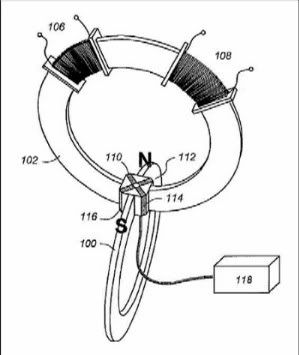
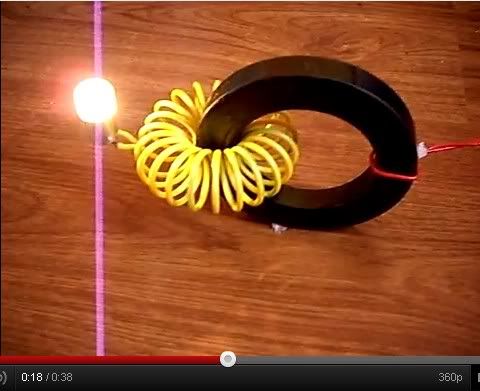


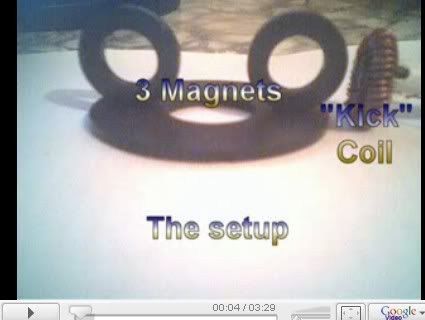


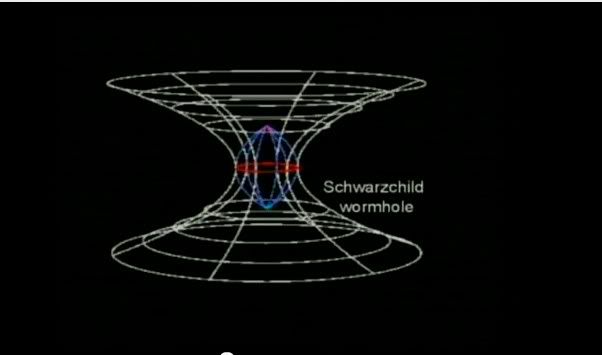


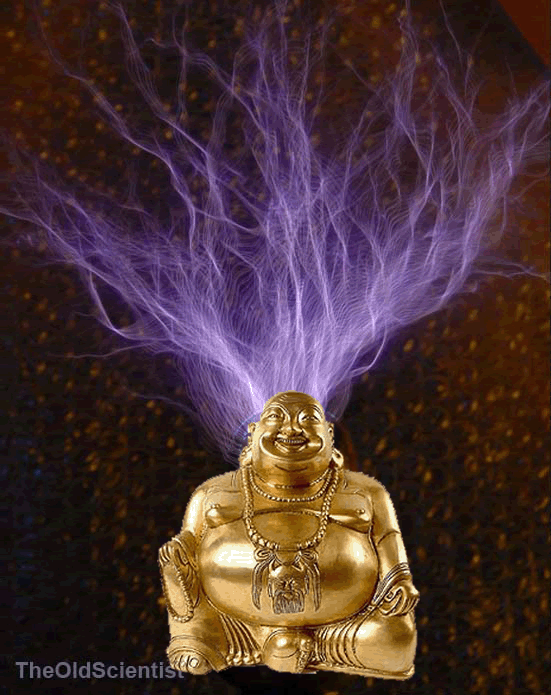




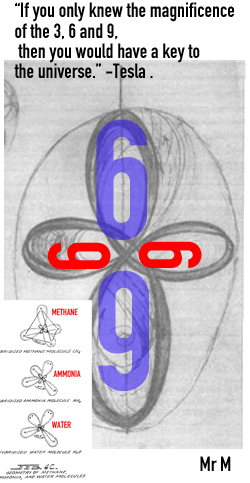
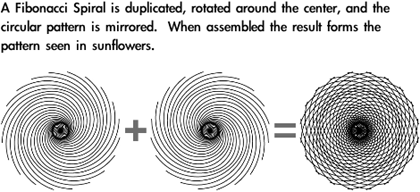





Comment